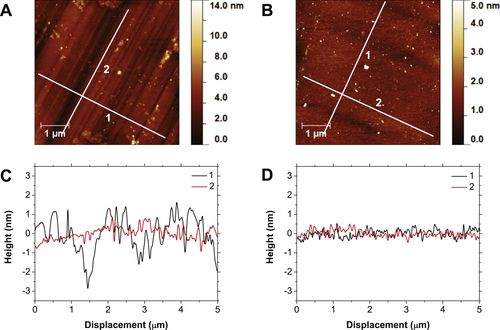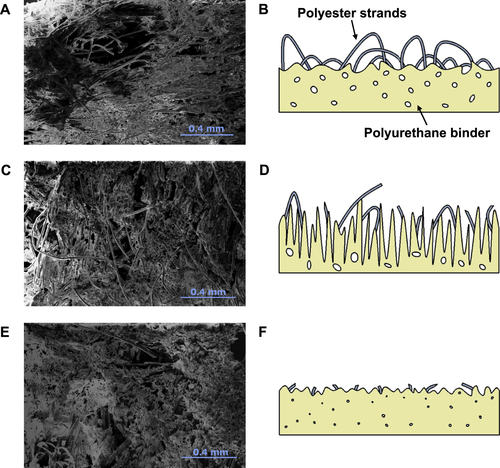Figures & data
Figure 1 AFM images of a {100} orientated single crystal before (A) and after chemical mechanical polishing (B). Shown in panels (C) and (D) are line traces perpendicular to the mechanical polishing direction (1) and along the polishing direction (2) of the respective AFM images. Clear removal of the nano-grooves can be seen in the AFM images, backed up by the dramatic reduction in amplitude of the perpendicular to polishing direction line trace.

Figure 2 AFM images of the {111} polished plane before (A) and after chemical mechanical polishing (B). Shown in panels (C) and (D) are line traces similar in fashion to those seen in figure . Once again, a clear removal of grooved surface features can be seen, leading to a very smooth surface with line trace roughness reducing from 0.31 and 0.23 nm rms for perpendicular to and along original polishing direction to 0.09 nm rms.

Figure 3 Plan view SEM images of polishing pad samples taken: (A) before use, (C) after conditioning for 1 h, and (E) after 7 h of single crystal polishing. Shown in panels (B), (D), and (F) are corresponding side view schematics of the polishing pad at the before use, conditioned, and used stages respectively. Abrasion of the pad by the electroplated diamond grit conditioner can be seen after 1 h of conditioning, with a general increase in the surface roughness of the polyurethane foam binder. Also visible is the severing of the polyester strands. After 7 h of use the pad has become severely abraded leading to a reduction in the polishing rate along with nearly all polyester strands being cut.

